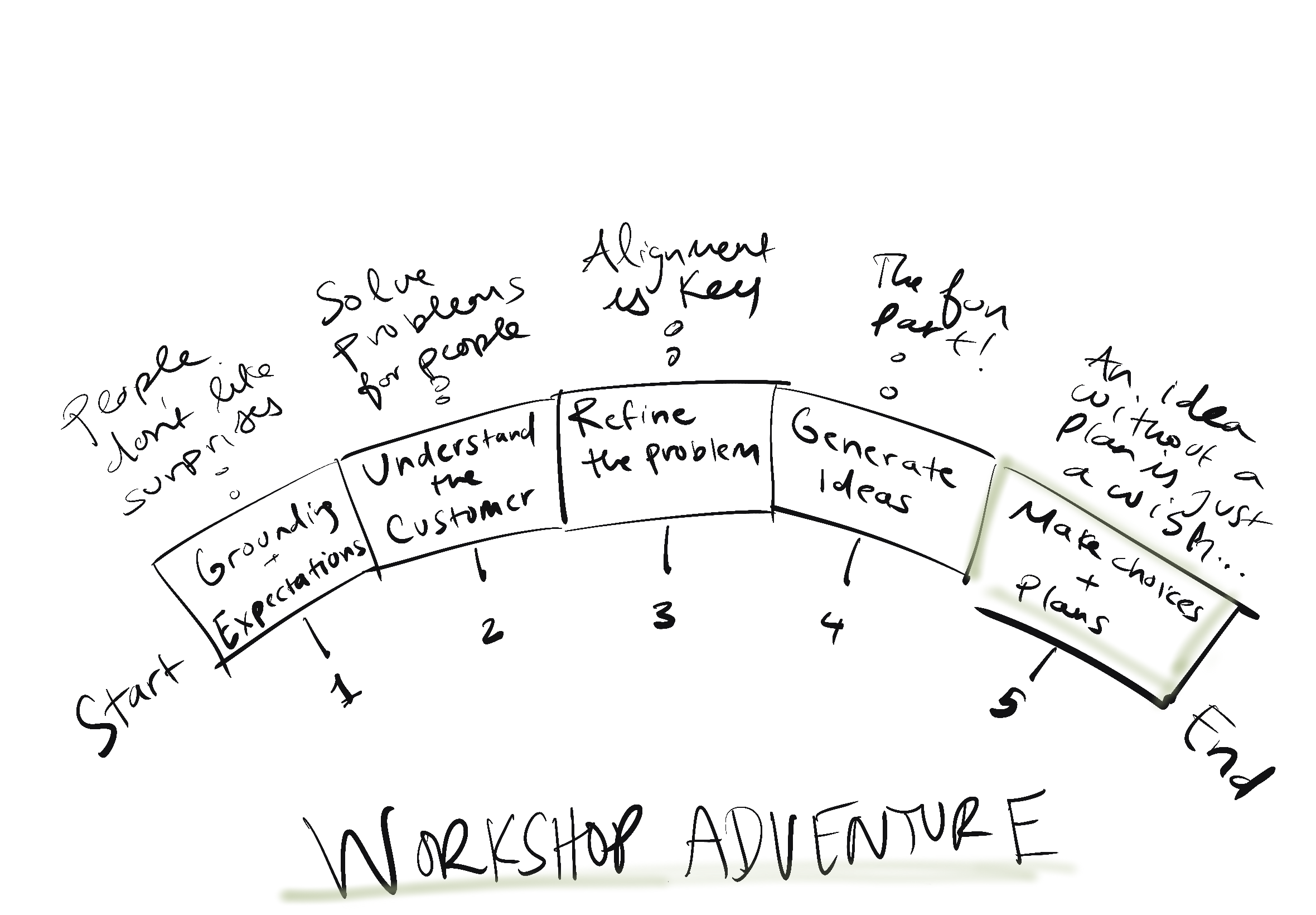How to design a winning workshop: Step 5 of 5
Don’t let the ideas and energy you’ve generated in your workshop stall out. End on a high note by facilitating the fifth and final part of a winning workshop: wrap-up activities.
Designating ample time for wrap-up exercises at the end of your session is key because it translates the team’s discussions, decisions, and ideas into distinct priorities and tangible next steps. And this direction will set the team up to move forward with clarity and confidence.
In today’s installment of my series on intelligent workshop design, I’ll be sharing my favorite wrap-up activities – the ones that outline a path forward to ensure your team maintains momentum.
Why facilitators need to save space for wrap-up activities at the end of workshops
Let’s say your team just finished a productive day of conversation, ideation, and solution exploration. The whiteboard is full of incredible content, your team is excited about the possibilities, and everyone agrees to follow up via email on next steps.
And that, right there, is where things go off the rails.
The final moments of a workshop or meeting are essential for aligning on priorities and outlining some initial next steps while the team is still gathered in the same room.
Here’s why:
Better Clarity and Focus: Wrap-up exercises distill ideas and discussions into manageable, actionable items. Prioritization helps participants discern what's most important, ensuring that they leave the workshop with a clear focus on the work that needs immediate attention.
Increased Accountability and Ownership: When participants actively engage in setting priorities, and defining specific next steps, responsibilities, and timelines, they take ownership of the outcomes. This empowerment fuels a sense of responsibility, making it more likely for them to follow through with the agreed-upon actions.
Better Transition to Implementation: Wrap-up exercises smoothly transition participants from the theoretical to the practical, equipping them with a roadmap or plan for translating ideas and discussions into real-world actions. This helps prevent overwhelm and ensures that the most pressing issues or opportunities are tackled immediately.
Activities to leverage to wrap up your next meeting or workshop
As the facilitator, it’s your job to help the team align on priorities, like which idea they’ll pursue, or which set of options they’ll vet further, or how they’ll refine the prototype. Ideally, you’ll also take them through an action-planning exercise to define some initial next steps.
Here are some of the activities I like to use to accomplish this:
Leverage the Horizons Method: This is an activity I do at the end of any strategic workshop, Design Sprint, or big meeting as a way to organize what will happen next, who will be responsible for doing it, and when it will be done. Check out this post for a step-by-step breakdown of the process.
Anticipate potential obstacles: After sharing next steps, ask participants to anonymously submit suggestions for making the initiative successful, and any blockers the group might need to navigate. The purpose of this exercise is less about tactical next steps and more about the things that can make or break whether the tactics succeed. Every organization has its own unique culture, and with it comes hidden challenges and barriers to creating momentum around something new. A lot of this knowledge tends to be institutional, so I love asking teams for these inputs because it helps me anticipate what rolling out a plan will actually look like, and how to get ahead of obstacles.
Review the parking lot: Revisit any open issues that came up during the workshop and determine whether items on that list need a follow-up action. Be sure to assign an owner to each item and a “by when” date so that things don’t end up floating in an ambiguous space. And give the team permission to say “that’s not important anymore,” or “we don’t actually need to address this now.” Sometimes things come up in a moment and seem especially important, but upon reflection they’re less of a priority.
Facilitation Tip: Give yourself plenty of time for wrap-up exercises – at least an hour or longer if you have a larger group. More is more in this case!
The bottom line is, you should designate time for wrap-up activities during every workshop or collaborative meeting. They’re critical for making sure that there’s accountability and clarity, ensuring that the team doesn’t stall out and the workshop’s impact is lasting and meaningful.
In case you missed them, check out the earlier parts of this series, including:
